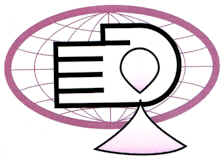Iodised salt facts for kids
Iodised salt (also spelled iodized salt) is table salt mixed with a minute amount of various salts of the element iodine. The ingestion of iodine prevents iodine deficiency. Worldwide, iodine deficiency affects about two billion people and is the leading preventable cause of intellectual and developmental disabilities. Deficiency also causes thyroid gland problems, including "endemic goitre." In many countries, iodine deficiency is a major public health problem that can be cheaply addressed by purposely adding small amounts of iodine to the sodium chloride salt.
Iodine is a micronutrient and dietary mineral that is naturally present in the food supply in some regions, especially near sea coasts, but is generally quite rare in the Earth's crust, since iodine is a so-called "heavy" element and abundance of chemical elements generally declines with greater atomic mass. Where natural levels of iodine in the soil are low and the iodine is not taken up by vegetables, iodine added to salt provides the small but essential amount of iodine needed by humans.
An opened package of table salt with iodide may rapidly lose its iodine content through the process of oxidation and iodine sublimation.
Salt is an effective vehicle for distributing iodine to the public because it does not spoil and is consumed in more predictable amounts than most other commodities. For example, the concentration of iodine in salt has gradually increased in Switzerland: 3.75 mg/kg in 1952, 7.5 mg/kg in 1962, 15 mg/kg in 1980, 20 mg/kg in 1998, and 25 mg/kg in 2014. These increases were found to improve iodine status in the general Swiss population.
In public health initiatives
Worldwide, iodine deficiency affects two billion people and is the leading preventable cause of intellectual and developmental disabilities. According to public health experts, iodisation of salt may be the world's simplest and most cost-effective measure available to improve health, only costing US$0.05 per person per year. At the World Summit for Children in 1990, a goal was set to eliminate iodine deficiency by 2000. At that time, 25% of households consumed iodised salt, a proportion that increased to 66% by 2006.
Salt producers are often, although not always, supportive of government initiatives to iodise edible salt supplies. Opposition to iodisation comes from small salt producers who are concerned about the added expense, private makers of iodine pills, concerns about promoting salt intake, and unfounded rumours that iodisation causes AIDS or other illnesses.
The United States Food and Drug Administration recommends 150 micrograms (0.15 mg) of iodine per day for both men and women.
Images for kids
See also
 In Spanish: Sal yodada para niños
In Spanish: Sal yodada para niños





